|
 Secure Site
Secure Site
|
 |
Archive for the 'Well-being' Category
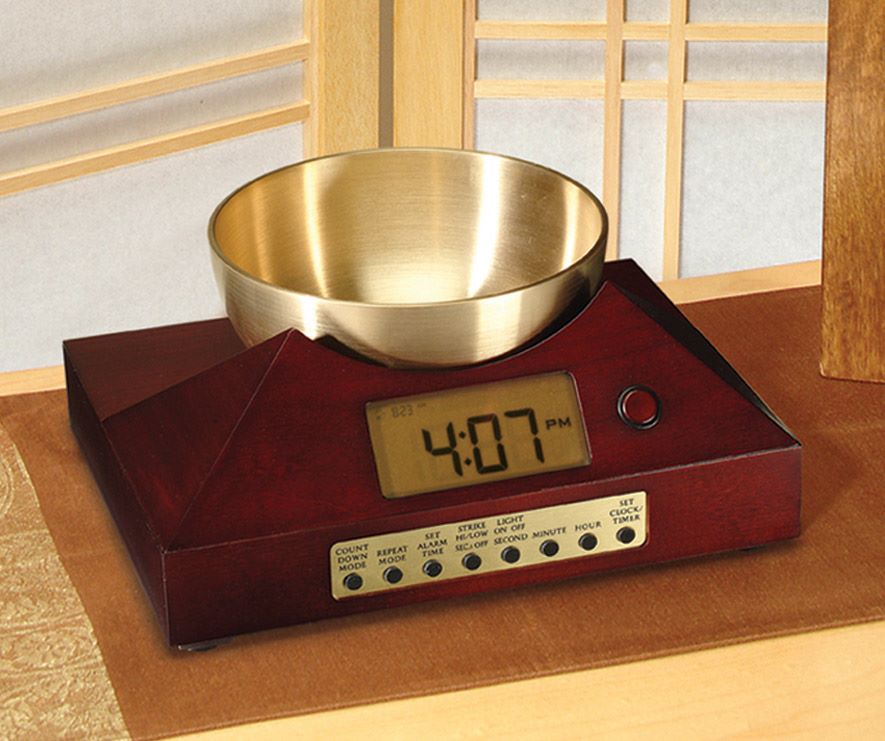 unique brass singing bowl alarm clock The Zen Timepiece
As a result of ten years of product evolution at Now & Zen, we have created the world’s most exquisite alarm clock and multi-use lifestyle timepiece. Our new Zen Timepiece’s acoustic brass bowl-gong fills your environment with beautifully complex tones whenever it strikes. In the morning, its exquisite sounds summon your consciousness into awakening with a series of rich, subtle gongs that provide an elegant beginning to your day. When the alarm is triggered, the bowl-gong strikes just once … then automatically, it strikes again in 3-1/2 minutes … then in 2 minutes … then in 1 minute … As shown in the chart on the facing page, the gong strikes gradually increase in frequency over 10 minutes, eventually striking every 5 seconds until turned off. Once you experience the Zen Timepiece’s progressive awakening, you’ll never want to wake up any other way. This aesthetically sophisticated product also serves as the perfect timer for yoga, meditation, bodywork, or any practice activity. It can also be set to strike its bowl-gong on the hour as a ‘mindfulness bell.’ As beautiful to see as it is to hear, the Zen Timepiece makes an elegant addition to your home.
 singing bowl alarm clocks In addition to the beauty of its sound, the Zen Timepiece is also visually beautiful, serving as a decorative accessory that can be positioned with the digital clock display facing out, or with the bowl-gong to the front, as shown on the right. It is available in either a clear maple wood finish or a reddish-brown cherry wood finish. The volume of the Zen Timepiece’s gong strikes can be adjusted over a wide range, from soft, subtle ring tones to loud, bold gongs that can be heard throughout the house. But regardless of how you use it, we are sure that the Zen Timepiece will improve your life with the natural resonant tones of its rich acoustic gong.
The Zen Timepiece runs on 2 “C” batteries (not included), it measures 4.5 inches high, 9.5 inches wide and 7 inches deep, and comes with a 40 page booklet detailing its many uses and its harmonic design.
 unique soothing gong alarm clocks with singing bowl Now & Zen
1638 Pearl St.
Boulder, CO 80302
(800) 779-6383
Posted in Now & Zen Alarm Clocks, wake up alarm clock, Well-being, zen
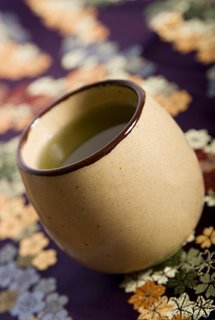 warm up with cider Whether you’re celebrating the holidays with friends, trimming the tree with your family, or curling up on a cold night with your favorite translation of the Yoga Sutra, this charming cider is the perfect winter treat. The tart cranberry and zesty lemon infuse the sweet apple with layers of flavor. And the cinnamon and cloves will infuse your kitchen with nourishing, heartwarming aromas.
In a large pot, combine 4 cups of apple cider, 2 2⁄3 cups of cranberry juice, 3 tablespoons of packed brown sugar, 2 cinnamon sticks, 12 whole cloves, and a whole lemon, thinly sliced. Bring to a boil, reduce the heat, and simmer for 15 to 20 minutes. Strain, pour into 4 large mugs, and enjoy. (From allrecipes.com)
Health Benefits: According to ayurveda, cinnamon and cloves boost your digestion. Apples, cranberries, and lemons are loaded with cancer-fighting antioxidants, which slow the aging process and keep your heart healthy. And their vitamin C content will keep your immune system strong all winter long.
Crystal Ketterhagen is the former Managing Editor of Yoga International.
 tools for timing tea and yoga Now & Zen
1638 Pearl St.
Boulder, CO 80302
(800) 779-6383
Posted in Well-being
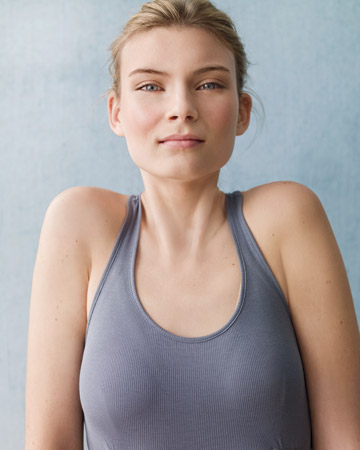 Stretch the Stress Out What it does:
Gets rid of shoulder and neck tension, helps lift the shoulder blades and collar bones up off the rib cage for better posture.
How to do it: Stand or sit with your spine tall. Inhale, then exhale deeply while making an “s” sound. As you inhale for a count of three, slowly lift your shoulders up toward your ears. Exhale with an “s” sound to a count of three as you roll your shoulders back, and finally lower them down as you inhale to a count of three. Repeat five times.
adapted from Body + Soul Magazine
Use our unique “Zen Clock” which functions as a Yoga Timer. It features a long-resonating acoustic chime that brings your meditation or yoga session to a gradual close, preserving the environment of stillness while also acting as an effective time signal. Our Yoga Timer & Clock can be programmed to chime at the end of the meditation or yoga session or periodically throughout the session as a kind of sonic yantra. The beauty and functionality of the Zen Clock/Timer makes it a meditation tool that can actually help you “make time” for meditation in your life. Bring yourself back to balance.
 Digital Yoga Timers with Gentle Chime Now & Zen– The Yoga Timer Store
1638 Pearl Street
Boulder, CO 80302
(800) 779-6383
Posted in Well-being, yoga, Yoga Timer, Yoga Timers by Now & Zen
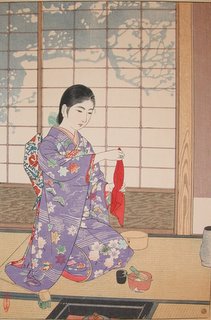 Inner Listening Practice Discover your Heartfelt Desire.
By Kelly McGonigal
To Discover your Heartfelt Desire, reflect on or write about the following four questions. Before you dive into self-inquiry, spend a few minutes in quiet meditation. Let the mind settle and become spacious. Cultivate an attitude of listening, and welcome whatever feelings, images, and thoughts might arise in response to these questions.
- What is something I really want in my life?
How do you think having it will make you feel? Looking back over the course of your life, has some form of this desire always been present?
- What is the most important goal in my life right now?
What have you been working toward? What desire is behind that goal?
- What should I be devoting my energy and resources to?
At this stage of your life, what direction do you find yourself being pulled toward? What stands out as the biggest opportunity or responsibility in your life?
- What is my biggest dream for myself and my life?
Is there a dream so big, a vision so bold for your life that you wonder if it is possible? Is there a deeper longing that feels a bit risky to the conditioned mind, and makes you feel vulnerable, open, and tender?
To translate this desire into a specific intention, ask yourself the following questions:
- What actions can I commit to that are consistent with this heartfelt desire?
What needs to happen in the next 6 to 18 months to move me forward on my path? What is the first step in this direction?
Kelly McGonigal, PhD, teaches yoga, meditation, and psychology at Stanford University and is the author of Yoga for Pain Relief (New Harbinger, 2009).
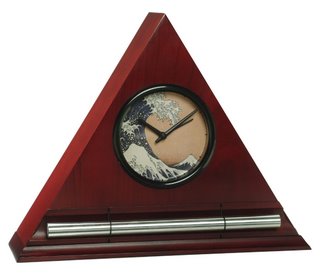 Zen Alarm Clocks for a Gentle Awakening Now & Zen
1638 Pearl St.
Boulder, CO 80302
(800) 779-6383
Posted in Now & Zen Alarm Clocks, Well-being
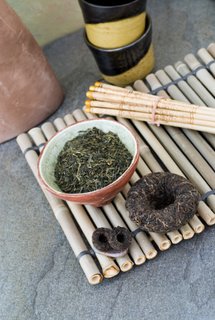 making medicinal teas Body+Soul, June 2008
Medicinal teas are easy, natural ways to help relieve numerous ailments such as PMS, hot flashes, mood-swings, and fatigue. Here is how to brew your next batch.
For dried herbs and supplies, try Jean’s Greens or Mountain Rose Herbs.
Single Ingredient Teas
Leaves And Flowers
Pour a quart of boiling water over 4 tablespoons of the herb, cover and steep for 20 minutes, and strain.
Roots, Berries, Or Bark
Simmer 4 tablespoons for 20 minutes, then strain.
Tea Blends
For teas that call for multiple ingredients, you’ll save time by making a large batch of dried herbs.
To make a blend, follow the ratio in the recipe, using 1 ounce of dried herb per “part”; for example, if a formula calls for one part each of nettle and oat tops and 1.4 part peppermint, combine 1 ounce each of the first two ingredients with 1.4 ounce of the last. Mix well, and store your blend in an airtight glass container.
To make a quart of tea, a good daily dose for many conditions, pour boiling water over 4 tablespoons of the mixture in a quart-sized heat-proof jar (such as a Mason jar). Cover and steep for at least 20 minutes. Strain the herbs out. Will keep refrigerated for two to three days.
Tea Recipes for Women’s Health
PMS Relieving Nettle Tea
Pour a quart of boiling water over 4 tablespoons dried nettles (plus a tablespoon of spearmint or peppermint for flavor); steep for at least 20 minutes, and strain. Drink 2 cups or more daily.
Cramp-Relief Tea
Add 5 to 6 tablespoons of fresh or dried ginger to 1 quart of water; cover and simmer for 10 minutes. Add honey and lemon to flavor. Sip hot throughout the day.
Pregnancy-Prep Tea Blend
Combine 1 part each of dried tea nettle leaf, raspberry leaf, lady’s mantle, and cut-and sifted ginger. Drink 3 to 4 cups daily.
A Fatigue Fixing Tea Blend
Mix equal parts nettle, raspberry leaf, oat tops, and lemon balm with 1/4 part each of cut-and sifted licorice and ginger. Drink 3 cups daily.
Hot Flash Cooling Tea Blend
Combine equal parts sage, blue vervain, and motherwort with 1/2 part peppermint or spearmint for flavor. Drink throughout the day as needed.
Happiness Tea Blend
Combine equal parts hawthorn (berries, leaf, and flowers), lemon balm, St. John’s wort, blue vervain, and oat tops. Drink 3 to 4 cups daily.
 timer with gong Now & Zen, Inc.
1638 Pearl St.
Boulder, CO 80302
(800) 779-6383
Posted in Tea Ceremony, Well-being
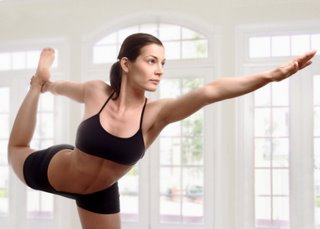 Winter Yoga For winter sports fans, yoga offers refined technique, better balance, and the freedom to fly.
When Hannah Dewey skis, she likes to go fast. “I tend to powerhouse it,” she says. “I muscle my way through.” As a longtime skier and a professional wildfire fighter, Hannah is strong enough to ski fast, even uphill. But after 22 years of skiing, she’s learned something surprising, a lesson that comes from her yoga practice: To get the most power, she has to slow down and focus her mind on the present moment. “If I go calmly step by step, concentrating on my form, I can actually go faster,” she says.
I met Hannah, along with more than 40 other skiers, at the eighth annual Women’s Ski and Yoga Retreat in the Methow Valley of northern Washington. I joined a group of athletes who do yoga for many reasons: to enhance their performance on skis, to ward off injury, and to experience the singular bliss that comes from a focused effort and a clear mind. “Yoga and skiing go together for me,” says Mary Ellen Stone, another retreat regular. “They’re both ways of putting away all the clutter in our lives and focusing physically, emotionally, and technically on something that’s not easy to do. But when it all comes together, it’s one of the best feelings in the world.”
I’d come to have my own experience of the synergy of yoga and skiing, but because I hadn’t skied since
I was a kid, getting faster was not my primary goal. Still, the lessons I’d internalized in my years of yoga practice turned out to serve me well on the trails.
Let It Snow
The secluded Methow Valley is a Nordic skier’s paradise. A popular place for Olympic skiers to train,
the valley has 120 miles of cross-country trails—one of the longest systems of groomed trails anywhere
in North America—as well as access to many more miles of challenging backcountry ski routes in the 4 million acres of the surrounding Okanogan-Wenatchee National Forest.
The women meet at Sun Mountain Lodge, the mountaintop resort hosting the retreat, which
is organized by the nearby Winthrop Fitness center. Many of my fellow retreat participants have skied competitively. Some are experts at downhill skiing but have come to master cross-country. A few are snow-sport newbies like me.
At 7 o’clock the next morning, I warm up my resistant quadriceps in Melanie Whittaker’s yoga class. Melanie is a cross-country skier and the yoga director for Winthrop Fitness, and has been practicing yoga for more than 30 years. She teaches an Iyengar-inspired style and counts elite skiers and other athletes among her students. She explains that we’re preparing ourselves to move forward with agility and speed while balancing on a slippery and constantly changing surface of snow and ice. For the next 90 minutes, she leads us through a series of strong
poses like Ardha Chandrasana (Half Moon Pose) and Virabhadrasana (Warrior Pose) I, II, and III, which call for strength, balance, and confidence—the same qualities we’ll need
to draw on once we strap on our skis.
Moving with any sort of grace on a slippery surface is inherently challenging, she tells us,
as we do Utkatasana (Chair Pose), and to keep our balance we’ll need a strong, compact form and a low center of gravity. She also reminds
us that to be successful at skiing, as with yoga, we have to learn to trust our bodies. When we do Handstand, she reminds us that it is trust that allows us to bring our hips over our heads, and our legs into the air. I’ll have occasion to remember her words later in the day.
Free Fall
After class I make my way, skis in hand, to a flat, groomed field for my beginner’s lesson.
A misty fog floats across the hills, just above the treetops, and occasional watery sunshine glints from behind the clouds.
The two most common kinds of cross country skis—classic and skate—have corresponding, but different, techniques. To move forward on classic skis, you keep your feet
parallel and execute a series of gliding lunges. With each step, you shift your center of gravity forward, bringing your body weight fully over the ball of the front foot, almost past the point where you feel you’re going to fall, while pushing the ground away with your back leg. To
balance and stay stable, says my instructor, you tuck into an Utkatasana-like form, bending your front knee and ankle, dropping your sitting bones, and firming your core.
When I ask some of the more experienced skiers, like Hannah, how their yoga practice supports their skiing, they emphasize core strength and balance. “In skiing, my form comes from my core,” says Hannah. “I concentrate on keeping my core really tight, and my legs just follow.” As the ski class gets under way, I see what she means. If I bend my ankles and knees and tip my weight forward, I glide. If I straighten up out of that slight tuck, I
wobble and, more often than not, fall.
“Bend your knees and ankles,” shouts my instructor. “Weight forward!” I bend my knees. I bend my ankles. I drop my sitting bones, finding the skier’s Utkatasana. I connect to the strength in my ankles, calves, and thighs and, with a slight adjustment, release my body weight forward. And there it is. I am gliding with a remarkable feeling of ease, making wide turns down the slope. I no longer feel that the skis are unruly clown shoes, tripping me up. They are seamless extensions of my legs, and they do my bidding.
That afternoon, we take off down a trail into the forest. I experience a delicious sense of well-being and freedom as I slide through the quiet forest and enjoy the afternoon sunlight gleaming through pine trees decked with garlands of sage-green moss. I’ll never look at Utkatasana the same way after today. Instead of feeling like a sweaty struggle for balance, it now feels like the pose of victory.
 Moss Garden Restore and Tend
That evening, the group meets for an apres-ski stretch, and I find Melanie for a quick consultation. All of that forward crouching has left me with a sore back. She has me try a variation of Sphinx Pose, in which I press my hands into the ground and work my upper arms toward each other to open up my upper back and chest. A supine twist relieves my lower back, and Supta Baddha Konasana (Reclining Bound Angle Pose) helps release the piriformis, a muscle deep in the buttocks that tends to tighten in skiing.
As to my other aches and pains—I’m feeling my shoulders, arms, core, inner thighs, outer thighs, calves, and ankles—she tells me I’m making the rookie mistake of unnecessarily gripping a lot of auxiliary muscles I don’t need to in the process of trying to engage the ones I do. “You’ll get more power and control when you learn to isolate the muscle groups you need,” she says. “You’ll also be a lot less sore and fatigued at the end of the day. Practicing the body awareness you learn in yoga will help you on the slopes.”
Being Balance
In the next morning’s yoga class, Melanie brings our attention to our feet. Being aware of our feet, she tells us, is a critical factor in balance. In Utthita Parsvakonasana (Extended Side Angle Pose), we practice putting even pressure through the entire foot, observing how the slightest shift to one side can unbalance us.
The skiing portion of the second day focuses on skate-style skiing. Skate skis are especially slippery. When you are moving across the snow’s slick surface, the slightest muscular effort creates motion, which presents a new kind of balancing challenge. To gain control of my movement, says my instructor, I have to master the art of “edging,” or delicately shifting weight to the inner edge of my foot to grip into the snow, which will allow me to push off into a glide.
As I slide around like a bumper car, I try to remember to spread my toes and keep my feet relaxed so that I can control how my weight shifts. Meanwhile, I’m fielding more instructions: Bend your knees, push off the back foot, shift weight to the front foot, bring one pole forward. Every time I try to do one thing the instructor tells us, I forget the others, tense up, and lose my balance. Finally she notices my difficulty and gives me yet another instruction: “You—just stop thinking!”
I pry my gaze away from my feet, look straight ahead in the direction I want to go, and thrust myself forward into a glide. I plunge forward, and this time I start to get the momentum, the slight swaying, the powerful back-leg strokes pushing me forward. I grin like a little kid, glancing at the teacher to make sure she sees me before my next slippery fall.
And then it occurs to me: Balance is not something you achieve and hold on to. It’s more ephemeral; it’s a string of temporary successes, held momentarily, lost, and then discovered again. Skiing gives you a fleeting experience of balance with each shift of weight and each glide. But it’s not permanent. When you lose it, you just have to have faith that you’ll come back to it.
Sweet Surrender
I feel I’ve been treated to a glimpse of the synergies of yoga and skiing. Hannah told me that her favorite yoga teacher reminds her to slow down and stay focused when she starts to rush through her Sun Salutations. Of all the benefits that her practice confers on her sport, she says, the most important one has come in the form of a mental shift: “Yoga has helped me slow down and concentrate on myself, and on having a good time out there.”
Mary Ellen echoes this sentiment: “When you’re out there and you see the snow sparkling on the trees and hear the ravens calling, you think, ‘I’m so lucky, so extraordinarily lucky, to be doing this.’ It’s a deep feeling, being there, right in that moment. That feeling is hard to come by.”
After dinner on the last night of the retreat, I make for the hot tub. I set my chin on the cold rock ledge of the tub and count a handful of lights in the houses in the valley below. The rest of my view consists of the snow-blanketed Mount Gardner. The full moon shines through the spreading branches of a pine tree on the slope before me. A rumbling sound disturbs the quiet as the trail grooming machine starts up. To my ears, it’s a sweet sound, promising freshly groomed trails to glide down in the morning.
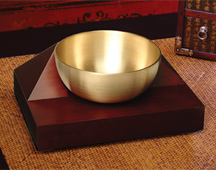 Timers for Yoga and Meditation with Tibetan Singing Bowl Use our unique “Zen Clock” which functions as a Yoga Timer. It features a long-resonating acoustic chime that brings your meditation or yoga session to a gradual close, preserving the environment of stillness while also acting as an effective time signal. Our Yoga Timer & Clock can be programmed to chime at the end of the meditation or yoga session or periodically throughout the session as a kind of sonic yantra. The beauty and functionality of the Zen Clock/Timer makes it a meditation tool that can actually help you “make time” for meditation in your life. Bring yourself back to balance.
 Meditation timers and chime clocks by Now & Zen, Inc. Now & Zen’s Yoga Timer Shop
1638 Pearl St.
Boulder, CO 80302
(800) 779-6383
Adapted from Yoga Journal.com, By Carmel Wroth, sequence by Melanie Whittaker.
Posted in Well-being, yoga, Yoga Timer, Yoga Timers by Now & Zen
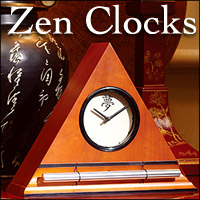 zen alarm clock As the temperature drops, your superficial venous circulation slows down, meaning your body has to work harder to get blood from your feet back to your heart. To help your venous circulatory system and keep varicose veins at bay, Dr. Luis Navarro of the Vein Treatment Center in New York City suggests getting your feet 6 to 12 inches above your heart at least once a day. Tonight, try a yoga pose that raises your legs against a wall, or lie on the couch with your feet resting on a stack of pillows. Cup of hot tea (or hot toddy) optional.
adapted from Wholeliving.com, Oct. 2011
Posted in Well-being, Zen Alarm Clock
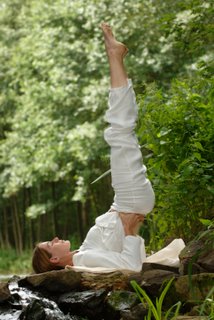 wellness practice of the day Before the hustle-bustle of the holidays throws your routine off-kilter, take some time to reconnect with the earth, viewed in most mind-body traditions as the source of power and stability. “We’re often mentally hovering a few feet above the ground,” says Kate Hanley, author of “The Anywhere, Anytime Chill Guide.” “It’s important to get back in touch with the ground beneath you.” So make a five-minute savasana your new daily habit: Set your Zen Wellness Timer for 5 minutes, lie on your back with your eyes closed, listening to your breath and feeling the earth support you.
adapted from Wholeliving.com, October 2010
Use our unique “Zen Clock” which functions as a Yoga & Meditation Timer. It features a long-resonating acoustic chime that brings your meditation or yoga session to a gradual close, preserving the environment of stillness while also acting as an effective time signal. Our Yoga Timer & Clock can be programmed to chime at the end of the meditation or yoga session or periodically throughout the session as a kind of sonic yantra. The beauty and functionality of the Zen Clock/Timer makes it a meditation tool that can actually help you “make time” for meditation in your life. Bring yourself back to balance.
 Wellness Timer, The Digital Zen Alarm Clock in Solid Walnut
Now & Zen – The Zen Alarm Clock Store
1638 Pearl Street
Boulder, CO 80302
(800) 779-6383
Posted in intention, mindfulness practice, Well-being, Yoga Timer, Yoga Timers by Now & Zen, Zen Timepiece by Now & Zen, Zen Timers
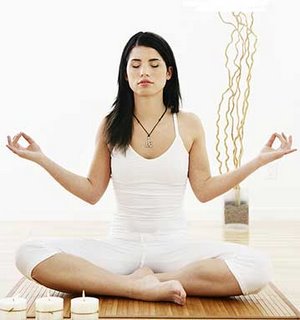 meaning and joy Exhaustion Cause: Lack of Meaning and Joy
Exhaustion Cure: Keep a Journal
Start by recording your sources of disconnection and stress. At the end of each day, write down all the things that created stress in your life, how you reacted to them, and the result of your actions. “After a while, you’ll start to notice patterns,” says Merrell. Then record all the things that bring you joy and pleasure.
Now plot your own route to a more meaningful life. Do less of the things that bring you unhappiness and anxiety, and more of those that make you feel good. You might find, for instance, that a nightly chat with your spouse keeps you grounded, whereas watching TV drains you. You could discover that making time for that dance class is worthwhile even when you’re tired, because you always leave energized. Or that you feel renewed after attending religious services or sitting down to meditate using your Zen Meditation Timer. Follow the trail of the positive, and you’re guaranteed to feel a charge. And if you don’t already, consider practicing random acts of kindness. “Giving to others without expecting anything in return is the highest form of connectivity,” says Merrell.
adapted from Body + Soul, September 2009
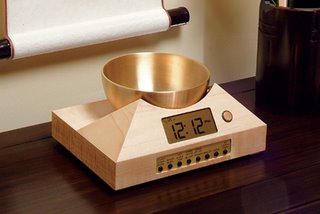 Singing Bowl Meditation Timer and Clock Use our unique “Zen Clock” which functions as a Yoga Timer. It features a long-resonating acoustic chime that brings your meditation or yoga session to a gradual close, preserving the environment of stillness while also acting as an effective time signal. Our Yoga Timer & Clock can be programmed to chime at the end of the meditation or yoga session or periodically throughout the session as a kind of sonic yantra. The beauty and functionality of the Zen Clock/Timer makes it a meditation tool that can actually help you “make time” for meditation in your life. Bring yourself back to balance.
Now & Zen – The Singing Bowl Meditation Timer Store
1638 Pearl Street
Boulder, CO 80302
(800) 779-6383
Posted in Bamboo Chime Clocks, Japanese Inspired Zen Clocks, Meditation Timers, Meditation Tools, Now & Zen Alarm Clocks, Well-being, Zen Timepiece by Now & Zen, Zen Timers
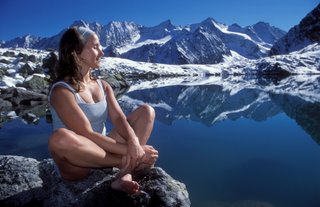 What benefits can I get from meditation? Benefits may seem slow to come and are subtle at first, but are long lasting and very effective. Just like exercise, you’re not going to see the changes in your body right away, but if you keep with it, you know you will reap the benefits. It’s the same with meditation.
There are many benefits to practicing meditation, many of which have been scientifically documented and studied.
Natural Solutions Magazine, by Jill Englund, April 2011
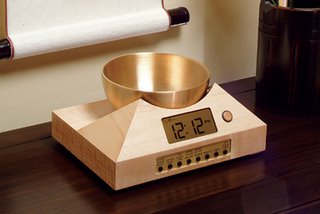 Meditation Timer and Clocks Now & Zen
1638 Pearl Street
Boulder, CO 80302
(800) 779-6383
Posted in Meditation Timers, Meditation Tools, mindfulness practice, Well-being
« Previous Page — « Previous Entries
Next Entries » — Next Page »
|
|
|
|